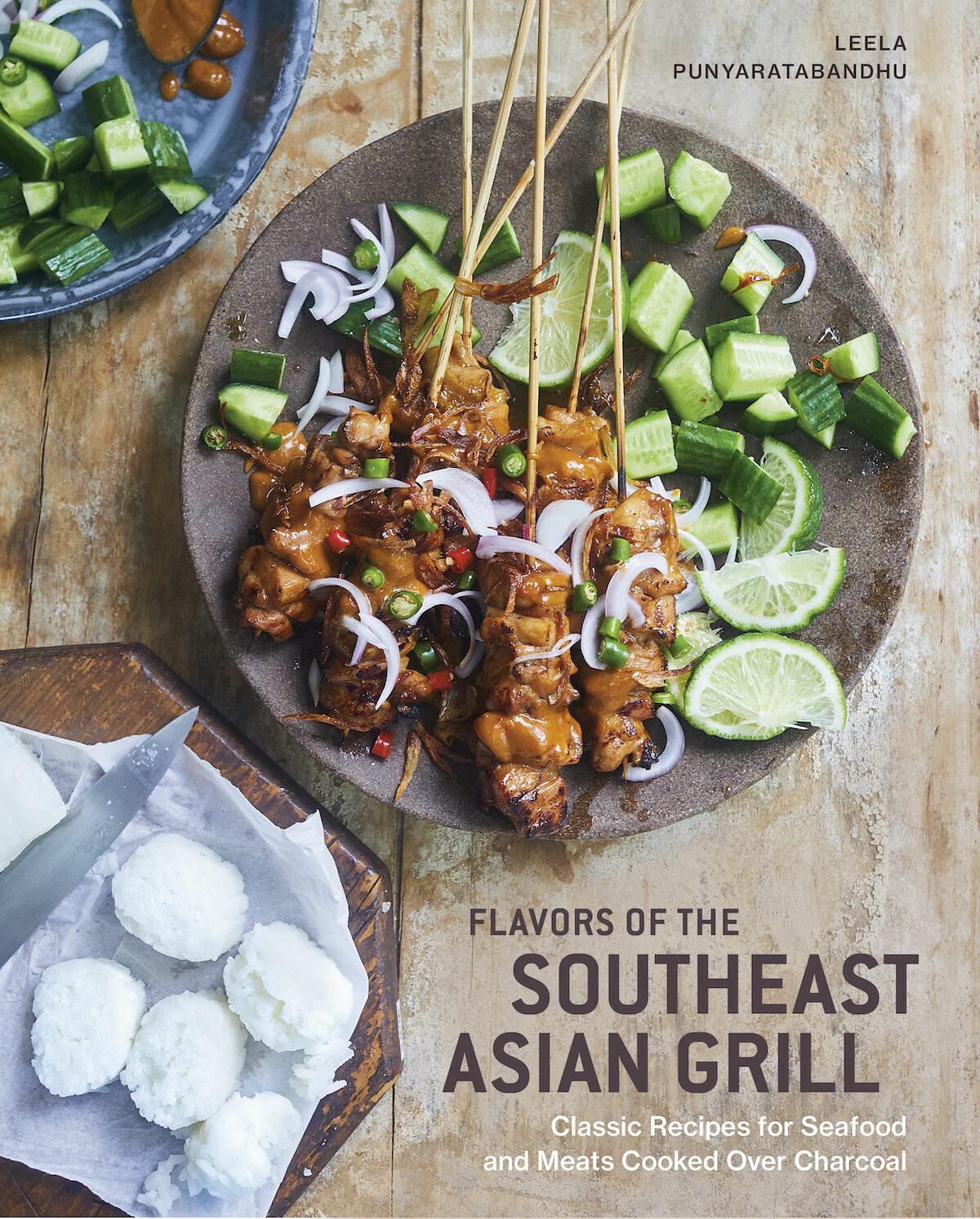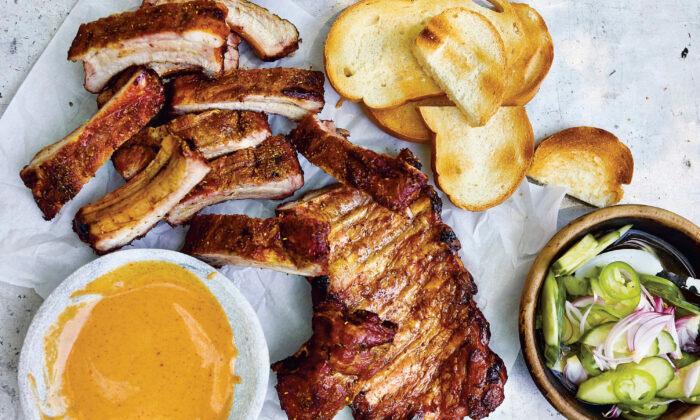Even though the lean (and often dry) chicken satay that is a staple at nearly every Thai restaurant in the United States leads people to believe otherwise, the most common type of satay in Thailand by far is made of pork.
A classic pork satay, made on the streets of Thailand, is served with a mild, salty, sweet coconut-based peanut sauce that is redolent of the spices and herbs associated with Thai red or matsaman curry. A small, shallow bowl of cool, tangy cucumber salad brings balance to the ensemble, and thick slices of toast, cut into bite-size cubes, are often served alongside.
As far as I know, nobody makes satay with bone-in pork ribs like this. But all of the traditional flavors and components are here. If you miss the bamboo sticks, think of the ribs as pork meat that nature has already threaded onto skewers—here, the rib bones. The big difference is that instead of cooking your satay hot and fast, the way it’s typically done, you will need to cook it low and slow.
Serves 4
For the ribs:
- 2 full racks baby back ribs, about 2 pounds each, rinsed and patted very dry
- 1 1/2 teaspoons salt
- 2 tablespoons coriander seeds
- 1 tablespoon cumin seeds
- 2 teaspoons fennel seeds
- 1 tablespoon black peppercorns
- 2 tablespoons ground turmeric
- 3/4 cup unsweetened natural creamy peanut butter (with a layer of oil on top)
- 1/4 cup Thai red or matsaman curry paste
- 1 1/2 cups unsweetened full-fat coconut milk
- 1/2 to 3/4 cup granulated sugar
- 1/2 cup water
- 2 tablespoons distilled white or cider vinegar
- 1 1/2 teaspoons salt
- 1/2 cup granulated sugar
- 1/2 cup distilled white or cider vinegar
- 2 tablespoons water
- 1/4 teaspoon salt
- 1/2 cup thinly sliced English cucumber
- 1 ounce shallots, thinly sliced lengthwise
- 1 fresh Thai long chile, cut crosswise into 1/4-inch slices
- 8 to 10 cilantro leaves
- 6 slices soft white bread, 1 inch thick, for serving
Rub the salt on both sides of the racks. Place the racks on a large sheet pan, cover with plastic wrap, and refrigerate for 2 hours.
Meanwhile, in a dry small frying, combine the coriander, cumin, and fennel seeds over medium-low heat and toast, stirring constantly, until fragrant, 2 to 3 minutes. Transfer the seeds to a spice grinder or a mortar, let cool, and then add the peppercorns and grind to a fine powder. Transfer to a small bowl and stir in the turmeric.
Once the ribs have chilled for 2 hours, moisten both sides of the racks with a little bit of vegetable oil—just enough to form a thin layer of glue for the dry rub—then spread the dry rub evenly on both sides of the racks.
Prepare a kettle grill for smoking or a pellet grill/smoker according to the manufacturer’s instructions. Aim for a temperature between 220 degrees and 230 degrees F. Place the rib racks bone side down in the grill and cook for 2 to 3 hours.
Meanwhile, make the peanut sauce: Pour the oil that has risen to the top of the peanut butter into a 2-quart saucepan (or use 1/4 cup peanut or vegetable oil) and heat over medium heat. When the oil is hot, add the curry paste and stir until fragrant, 1 to 2 minutes. Whisk in the peanut butter, coconut milk, 1/2 cup of the sugar, the water, vinegar, and salt. Bring to a boil and boil gently, whisking often, for 3 minutes. Taste and stir in as much of the remaining sugar as you like. Remove from the heat and let cool until slightly warmer than room temperature.
While the peanut sauce is cooling, prepare the dressing for the cucumber relish: Combine the sugar, vinegar, water, and salt in a small saucepan and bring to gentle boil over medium heat, stirring just until the sugar dissolves. Remove the pan from the heat and let the mixture cool completely.
After 2 hours, begin testing the ribs: Pick up a rack and bend it gently. If the meat between the ribs cracks, you’re good to go. Transfer the ribs to a platter but keep the fire going. While the ribs are resting for 10 minutes, toast the bread on both sides on the grill until golden brown and cut it into triangles, halves, or cubes as you wish. Finish the cucumber relish by stirring the cucumber slices, shallot slices, chile slices, and cilantro leaves into the prepared dressing.
Cut the rib racks into individual ribs and serve them with the peanut sauce for dipping, the toast, and the cucumber relish.
Recipe reprinted with permission from “Flavors of the Southeast Asian Grill: Classic Recipes for Seafood and Meats Cooked Over Charcoal“ by Leela Punyaratabandhu. Copyright 2020 SheSimmers.com. Photographs copyright 2020 by David Loftus. Published by Ten Speed Press, an imprint of Penguin Random House.

'Flavors of the Southeast Asian Grill: Classic Recipes for Seafood and Meats Cooked Over Charcoal' by Leela Punyaratabandhu (Ten Speed Press, $30).






